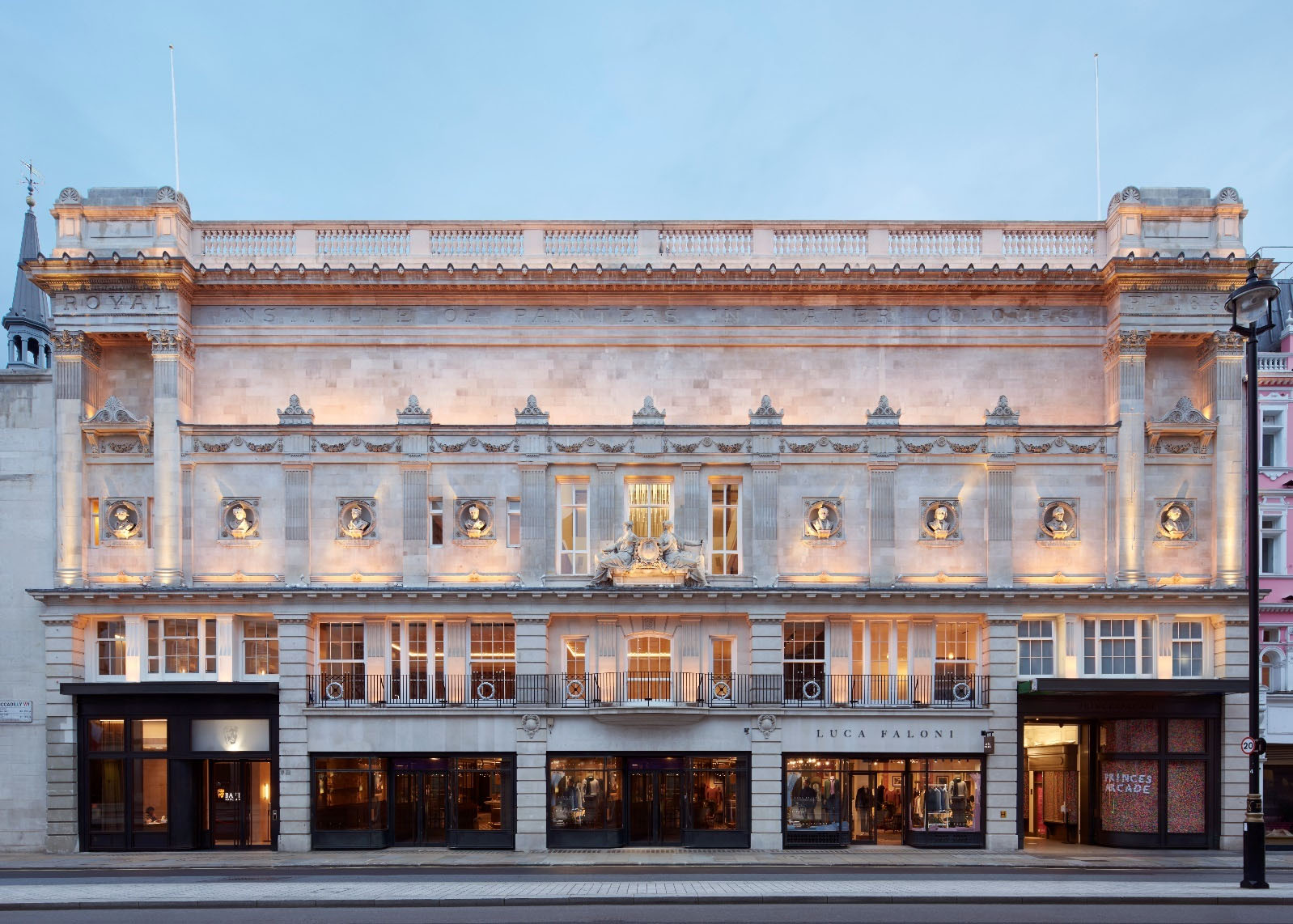The design enhances BAFTA’s international identity as the centre of excellence for motion picture arts in Film, Games and Television; integrating innovative state‐of‐the‐art technology and cost‐in‐use efficiency while sensitively balancing members’
needs with public access and revenue generation, ensuring the charity’s long‐term social, environmental, and financial sustainability.
The comprehensive expansion of BAFTA’s Grade II listed headquarters occupied by the charity since 1974. Built in 1883 as the Royal Institute of Painters in Water Colour, a medium then overlooked by the neighbouring Royal Academy of Arts, 195
Piccadilly is BAFTA’s home. However, the building’s size, layout and old services severely limited its ability to deliver an everwider range of charitable activities. A new lease with The Crown Estate, taking the charity past its 100th anniversary, prompted BAFTA to review and invest in its premises, commissioning Benedetti Architects as architects & interior designers to expand and fully reconfigure the building.
The 2,050m2 Listed building was tired, unfit for purpose, expensive to run and maintain. Our design creates 2465m2 state-of-the-art spaces with greater flexibility, balancing members’ needs with the charity’s education work and raising income. At the heart of the refurbishment is the Learning and New Talent floor, which is core to the charity’s mission, enabling them to support the inspiration and training of diverse young creatives in Film, Games and Television.
Three Winning Facts:
- Challenging and complex structural project undertaken with consideration to the sensitivity of surrounding neighbours whilst respecting the precious historic value of a beautiful building, now enhanced following the successful delivery of a high‐quality refurbishment.
- Innovative heritage approach boldly intervenes with the Listed grade II heritage by raising the original 1883 rooflights to breathe New Life into a Listed Building; while remaining a sensitive restoration, fully supported by Historic England, The Crown Estate and Westminster Council.
- Integrating state‐of‐the‐art technology and cost‐in‐use efficiency while sensitively balancing members’ & new talent needs with public access and revenue generation, ensuring the charity’s long‐term social, environmental, and financial sustainability.


